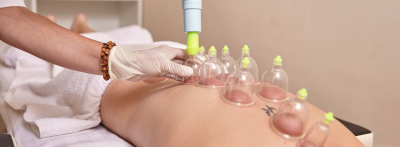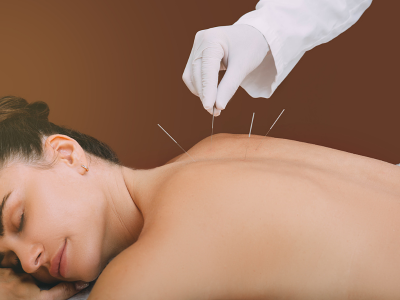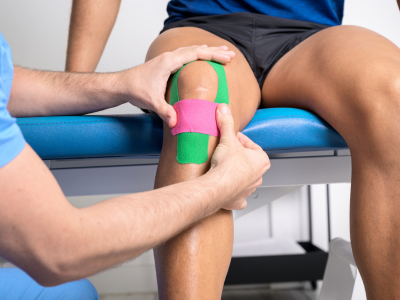Physiotherapy Procedures

Pre & Post Operative Therapy
Pre- Operative care in physiotherapy involves preparing the patient for the surgical procedure and minimizing the risks associated with anesthesia and surgery. Evaluation, Education, Exercise, Breathing exercises.
Post- Operative care in physiotherapy focuses on facilitating the patient’s recovery and helping them regain their physical function as soon as possible. Pain management, Early mobilization, Exercises, Gait training, Education.

Manual Therapy
Manual therapy is a specialized form of physiotherapy that involves the use of hands-on techniques to diagnose, treat, and prevent musculoskeletal and other related disorders. It includes various techniques such as Mobilization, Manipulation, Soft Tissue Mobilization, Muscle Energy techniques, Myofascial release.
Manual therapy can be used to treat a variety of conditions, including back and neck pain, shoulder pain, knee pain, headaches, and other musculoskeletal disorders. It can also be used in conjunction with other physiotherapy techniques, such as exercise therapy, to achieve optimal treatment outcomes.

Cupping Therapy
Cupping therapy is an alternative therapy that involves placing cups on the skin to create suction. This therapy is typically used to relieve pain, reduce inflammation, promote relaxation, and improve overall well-being. Cupping therapy is often used in traditional Chinese medicine but has gained popularity in Western cultures as well.
Cupping therapy can be used to treat a variety of conditions, including muscle pain, back pain, neck pain, headaches, and respiratory disorders. It is also believed to have a relaxing effect on the body and mind, making it a popular therapy for stress relief.

Dry Needling
Dry needling is a technique used in physiotherapy to treat muscle pain and dysfunction. It involves the insertion of thin, solid needles into the skin and underlying tissues, targeting specific trigger points or areas of muscle tension. The technique is called “dry” needling because no medication or solution is injected through the needles.
Dry needling is often used to treat musculoskeletal conditions such as neck pain, back pain, shoulder pain, tennis elbow, and knee pain. It can also be used to treat conditions such as headaches, fibromyalgia, and myofascial pain syndrome.

All Joint and Spine Care
Joint and spine care are two major areas of focus in physiotherapy, as these areas are frequently affected by conditions such as arthritis, back pain, and neck pain. Some of the techniques like Exercise therapy, Manual therapy, Electrotherapy, Postural correction, Joint protection, Spinal decompression.
Overall, joint and spine care in physiotherapy involves a multidisciplinary approach, including exercise therapy, manual therapy, electrotherapy, postural correction, joint protection, and spinal decompression techniques. A physiotherapist can create an individualized treatment plan to address a patient’s specific needs and goals.

Sports Injuries
Sports injuries are common among athletes and can occur in various parts of the body, including the muscles, joints, and bones. Physiotherapy plays a crucial role in the prevention, treatment, and rehabilitation of sports injuries. Some of the approaches used like Assessment and diagnosis, RICE protocol, Exercise therapy, Manual therapy, Modalities, Functional rehabilitation, Injury prevention.
Physiotherapy plays a crucial role in the management of sports injuries, focusing on reducing pain, restoring function, and preventing re-injury. A physiotherapist can create an individualized treatment plan based on the type and severity of the injury and the athlete’s goals and needs.

Tapping Therapy
The technique involves gently tapping on specific acupressure points on the body while focusing on a specific issue or problem. The points typically include the top of the head, the eyebrow, the side of the eye, under the eye, under the nose, under the chin, the collarbone, and under the arm. This tapping sequence is performed while mentally acknowledging and expressing any negative emotions or beliefs associated with the issue at hand.
Tapping therapy has been used to address a wide range of concerns, including anxiety, phobias, traumatic experiences, chronic pain, addictive behaviors, performance anxiety, and self-esteem issues. It is often used as a self-help tool that individuals can learn and apply on their own, but it can also be utilized in therapeutic settings with the guidance of a trained practitioner.

Craniosacral Therapy
Craniosacral Therapy is a gentle, hands-on approach to healing that focuses on the craniosacral system, which includes the bones, tissues, and fluid surrounding the brain and spinal cord. This therapy is based on the concept that the craniosacral system has its own rhythm and subtle movements that can be felt and influenced by a trained practitioner.
Craniosacral Therapy is a gentle and non-invasive therapy that can be used to address a variety of conditions, such as headaches, migraines, neck and back pain, TMJ disorders, stress-related disorders, and chronic pain. It is often utilized as a complementary therapy alongside other medical or therapeutic approaches.

Chiropractic
Chiropractic therapy is based on the belief that misalignments or subluxations in the spine can interfere with the nervous system, leading to pain, dysfunction, and various health problems. The primary goal of chiropractic therapy is to correct these spinal misalignments and facilitate the body’s natural ability to heal itself.
Chiropractic therapy is commonly sought for conditions such as back pain, neck pain, headaches, sports injuries, and musculoskeletal disorders. However, chiropractors can also provide care for a range of other health issues, as they take a holistic approach to patient care and consider the interconnectedness of the body.

Osteopathy
Osteopathy aims to restore and maintain overall health and well-being by addressing imbalances and dysfunctions within the musculoskeletal system, as well as their impact on other body systems.
Osteopathic treatment typically involves hands-on techniques, including soft tissue manipulation, joint mobilization, and gentle rhythmic movements. The aim is to restore proper structural alignment, improve mobility, enhance blood flow, and facilitate the body’s self-healing mechanisms.

Rehabilitation
t involves a multidisciplinary approach, often involving a team of healthcare professionals such as physicians, physiotherapists, occupational therapists, speech therapists, psychologists, and others, depending on the nature of the rehabilitation required.
Rehabilitation is commonly utilized for various conditions, including musculoskeletal injuries, stroke, neurological disorders, cardiac conditions, respiratory conditions, amputations, spinal cord injuries, and chronic pain. It is often an integral part of the recovery process, helping individuals regain function, adapt to any limitations, and enhance their overall quality of life.

Corporate Physiotherapy
Offered to employees as part of a workplace wellness program or occupational health initiative. It focuses on promoting the musculoskeletal health and well-being of employees, addressing work-related injuries, and preventing future issues that may arise from the demands of the job.
Ergonomic Assessments: Physiotherapists assess the work environment, including workstations, equipment, and tasks, to identify potential ergonomic risks and provide recommendations for adjustments that can help prevent musculoskeletal issues.
Injury Prevention and Education: Physiotherapists provide education and training sessions to employees on topics such as proper lifting techniques, posture, body mechanics, and stretching exercises. This helps raise awareness about injury prevention and empowers employees to take proactive measures to protect their musculoskeletal health.
Rehabilitation and Treatment: Physiotherapists offer assessment, diagnosis, and treatment for work-related injuries or musculoskeletal conditions. They develop personalized treatment plans and provide interventions such as manual therapy, exercises, and modalities to promote recovery and facilitate a safe return to work.
Health Promotion and Wellness Initiatives: Physiotherapists may organize workshops or group activities that focus on overall health and well-being. This may include fitness classes, stress management techniques, and strategies for maintaining a healthy work-life balance.
Workplace Modifications and Adaptations: Physiotherapists may collaborate with employers to identify and implement workplace modifications or adaptations that accommodate employees with specific needs, such as those with disabilities or chronic conditions.
